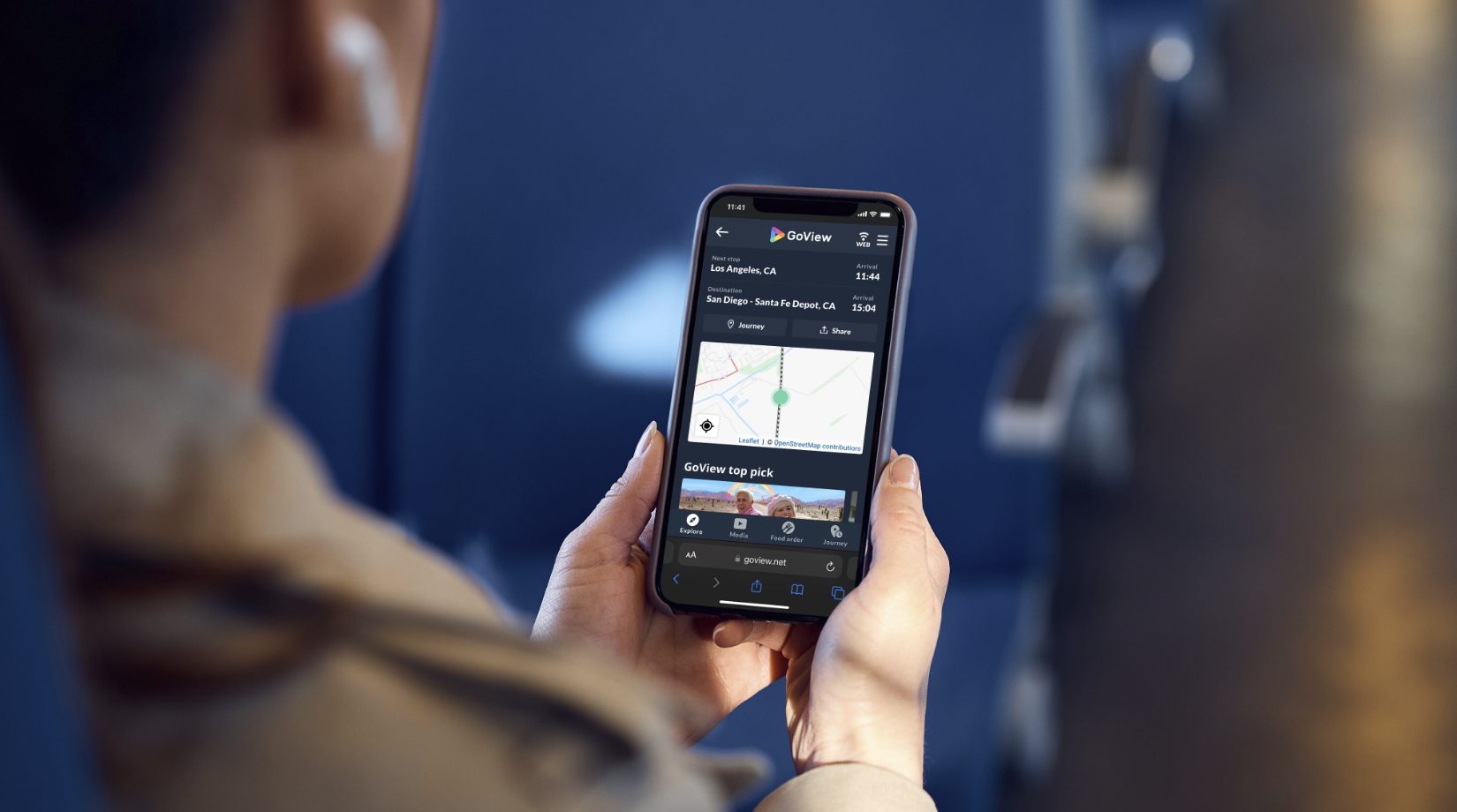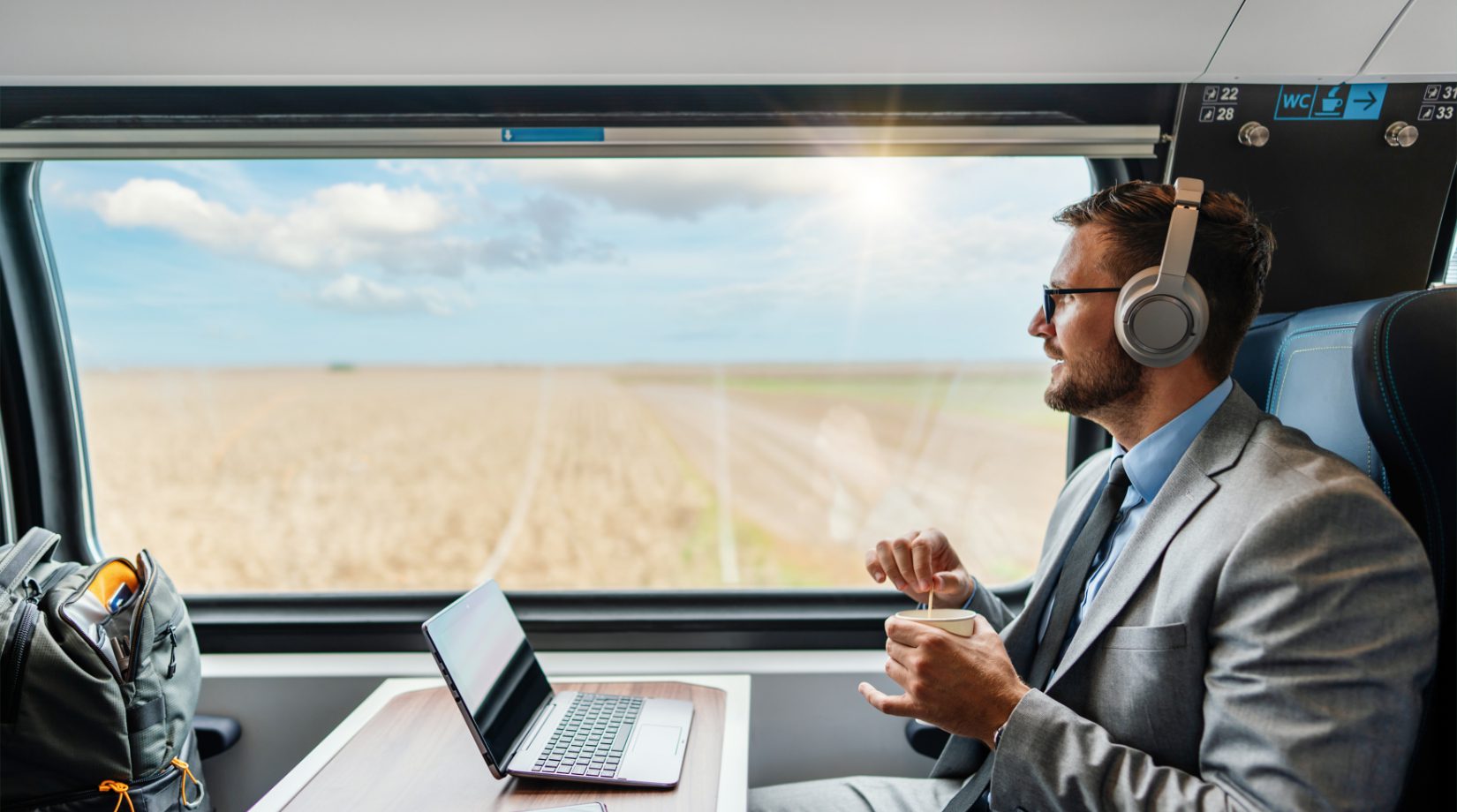Taking Passenger Satisfaction to the Next Level
A rail journey transcends mere transportation from point A to point B – it’s a transformative experience that redefines how passengers work, relax, and forge connections. Travelers are increasingly choosing rail for its convenience, affordability, and unique experiences. This surge in ridership is a global phenomenon and these numbers tell a compelling story: Amtrak...
The post Taking Passenger Satisfaction to the Next Level appeared first on Icomera.

A rail journey transcends mere transportation from point A to point B – it’s a transformative experience that redefines how passengers work, relax, and forge connections.
Travelers are increasingly choosing rail for its convenience, affordability, and unique experiences. This surge in ridership is a global phenomenon and these numbers tell a compelling story: Amtrak reported a 24.6% increase in ridership in the United States during its 2023 fiscal year.[1] Rail travel in the UK showed a 20% year-over-year increase during the third quarter of 2023.[2] Deutsche Bahn, the German operator, saw an 11.5% increase year-over-year in regional rail ridership in the first half of 2023.[3]
The surge in ridership marks a transformative era for all rail operators, signaling not just a resurgence of trains as a primary transport choice, but a revolutionary shift in what passengers expect from their journeys. The industry has the potential to recapture pandemic-era losses and draw new demographics by prioritizing the passenger experience. But to capitalize on this opportunity, transport operators will need to ensure that they’re consistently delivering the experience their passengers expect.
Here are the steps to getting to that next level of passenger satisfaction and it’s all built on connectivity.
The Moving Office
Redefining spaces to meet passenger needs
The traditional view of the office as a place for individual work is giving way to a new reality: it becomes a dynamic hub for collaboration and face-to-face interaction.
The notion that productivity is confined to the walls of a cubicle is a relic of the past.
In today’s fast-paced world, business travelers and remote workers are breaking free from traditional workspaces and finding productivity in unexpected places. This shift is particularly evident on trains, where in-transit Wi-Fi has become essential for passenger satisfaction.
This redefinition of the office’s role reinforces the value placed on the ability to perform solitary work tasks or join collaborative video calls during commutes. According to a recent report, an impressive 32% of travelers use train Wi-Fi for work, confirming its status as a new norm. London North Eastern Railway (LNER) noted, 82% of business travelers are choosing to travel by rail to stay productive while in transit and 51% say the Wi-Fi is more reliable than other modes of transport[4].
A recent example of this approach can be found in Porterbrook’s Innovative HydroFLEX train. DG8, an industrial design team, designed the interior of the train to include an ‘onboard boardroom’ featuring a conference table layout and 5G connectivity, meeting the needs of passengers looking to work, study or host meetings. By better understanding passenger habits, rail operators can design future carriages with amenities that truly meet travelers’ needs.
The Connected Foundation
Building a foundation for a connected journey
As passenger expectations climb faster than a bullet train, onboard Wi-Fi services are racing to keep up.
The ability to stay productive – and connected – during the journey is a key factor influencing the decision to choose rail travel. Yet still – in 2024 – passengers click the signal symbol in their task bar and anticipating the same level of productivity they would enjoy in a classroom, conference room, or office. Reliable wireless connectivity is a minimum standard for delivering passenger satisfaction — anything less will fall short of meeting expectations.
According to GSMA Intelligence, 77% of global train passengers expect to have access to Wi-Fi onboard by 2025, highlighting the growing demand for seamless connectivity.[5] A recent report from the UK rail operator LNER surveyed the next generation of rail travelers — those between the ages of 13 and 18[6]. Younger generations of passengers may all have their own mobile phones but only 30% have unlimited data. The remaining 70% have data plans ranging between 25GB and 200GB, leaving them dependent on public Wi-Fi for connectivity to avoid exceeding their limits.

The Wi-Fi Connection
Connecting and ghosting isn’t an option for a wireless connection
In the realm of Internet connectivity, the paramount challenge for rail operators is delivering a seamless connection to passengers. With the rise of remote work models, 80% of businesses globally are offering remote work options.[7] This trend underscores the growing importance of reliable connectivity for mobile workforces, including those traveling by train.[8] Standards will continue to increase, and rail operators need to ensure they’re keeping up with expectations.
The latest onboard connectivity platforms utilize intelligent data traffic management tools. By prioritizing, throttling, and blocking different types of traffic according to pre-set priorities, such as prioritizing Microsoft Outlook applications over other services during weekday mornings and evenings, passengers exhibit a reduced risk of heavy bandwidth use[9].
The Wi-Fi Portal
Bringing the onboard experience to an ecosystem-level
Onboard entertainment has long been seen as the natural complement to Wi-Fi. US coach operator, Greyhound, saw a 40-point increase in their Net Promoter Score after the first year of launching an onboard entertainment service. Media content is stored locally onboard the vehicle and does not require an Internet connection – freeing up more of the available bandwidth for passengers using the Wi-Fi for “digital chores” (emails and social media etc.).
To curate a personalized onboard experience, the use of data collection through onboard Wi-Fi usage can provide valuable insights into behavior and travel patterns.[10] By analyzing usage data, operators can see what types of content passengers are looking at and use this to further optimize the travel experience. A tourist on a longer journey may well be more interested in streaming media content, while a business traveler on a short morning commute may be more likely to want quick access to up-to-the-minute news. Rail services can deliver value and foster passenger loyalty by honing recommender systems and serving the right content to each passenger.
The Communication Channel
Instilling reliability and confidence with real-time information
Satisfied passengers expect to be proactively informed about the details of their journey without having to seek it out for themselves. Poor quality information, particularly during disruption, makes an already frustrating situation worse for passengers, and significantly more challenging for front-line staff[11]. In contrast, if a passenger is kept informed regarding any delay, they can plan around it, and even use it to their advantage.
Creating two-way communications channels between operator and passenger allows for issues to be addressed in real-time. As a result, the operator can then correct the issue and resolve the dissatisfaction before it affects other passengers. By focusing on passenger satisfaction (i.e. CSAT scores), rail operators create confidence to travel, loyalty, retention, and overall positive experiences. When passengers are offered the opportunity to communicate their journey experiences in real-time it not only empowers them but also equips the operator with actionable insights.
Going one step further, immediate conversation capabilities can transform negative incidents into positive service stories, leading to increased satisfaction levels.

The Hospitality Aspect
Optioning in convenience every step of the journey
Convenience is the common thread that runs through every exceptional retail or hospitality experience. Regardless of whether you live in the center of a major city, the suburbs, or in a remote community, convenience is now top of mind when considering how to get from point A to point B. This focus on convenience is even shaping the economic picture, as many people are willing to pay more for an experience, if they consider it to be more convenient.
Trending on longer rail routes is the offering of at-seat food and drink ordering, allowing passengers to see what’s available and order refreshments via the train’s online web shop directly from their Internet browser. Rail operators realize that a passenger wants to spend time in their own way – including if they want to wait. By using an at-seat ordering application, orders can be delivered directly to passengers at their seat or collected from the train’s buffet car. At-seat delivery clearly provides convenience-related benefits for all passengers, allowing them to continue watching that movie or chat with their friends/family while they wait, rather than having to get up to collect their order. And lone travelers do not need to worry about leaving their luggage unattended or taking it with them around the train to collect their order – potentially losing their seat if it was not reserved.

The Accessible Experience
Making rail travel available to everyone
In our technologically advanced modern world, we have an obligation to make reliable rail travel available to everyone.
Convenient and reliable rail travel should be accessible and inclusive for everyone yet 66% of people with disabilities struggle to make their journeys independently[12]. According to Hearing Dogs and Hearing Link, a recent survey noted only 7% of people with a hearing impairment reported being somewhat confident that they would be made aware of changes and disruptions during their journey. Of those surveyed, only 16% thought they were treated equally compared to people without hearing loss.
Digital technologies which use personal smart devices can provide at-hand support, reducing the barriers to use for customers with hearing or vision loss – and addressing some hidden needs of a broader audience as well.
These innovations provide cost-effective “quick wins” for transport operators and authorities due to the comparatively small amount of capital investment required to develop and deploy them, and the rapid speed with which this can be done.
The Real-Time Sentiment
Seeking real-time satisfaction levels
Rail operators are competing for passengers with private vehicles and ride sharing, and a rail service is only as good as its last journey.
Empathy emerges as the cornerstone of service quality, holding the power to profoundly influence and elevate passenger satisfaction.[13] The pandemic has brought forth a wide range of emotional responses from passengers, including fear and anxiety. Demonstrating empathy becomes crucial for rail operators. This involves understanding passengers’ concerns, addressing their questions and worries, and showing compassion towards any difficulties they may face while traveling.
Historically, passenger feedback was most often collected retrospectively, leading to inaccuracies about which service the passenger was using. Today, rail operators are moving towards enroute feedback – collecting sentiment in real-time, tagging the date, time, route, and direction of travel.
The traditional reliance on post-journey feedback, whether in the form of complaints or compliments, has long hampered rail operators’ ability to swiftly address concerns and cultivate positive passenger interactions in the moment. The ability to tap into passenger sentiment in real-time is invaluable. Where passenger experiences are often shared online or directly with the service provider, efficiently capturing sentiments can transform service delivery.
In an era where passenger feedback can significantly influence brand reputation and operational efficiency, understanding and addressing real-time sentiment is essential. If a passenger has a disappointing experience with unkempt facilities, delayed service, or unreliable Wi-Fi, they could be more likely to consider other options for their next journey — even if their five previous journeys were problem-free.

The Next Stop
Looking into the future where digital passengers are the heart of digitalization
The digital era of rail opens up a myriad of possibilities for operators to elevate passenger satisfaction to new heights. By focusing on the key areas outlined here – from seamless connectivity to personalized experiences – the passenger rail industry can secure a competitive advantage and prove rail travel as a mainstay for the modern passenger.
This isn’t just about technology upgrades; it’s about embracing a mindset shift. Operators must understand that passenger expectations are shaped by their daily digital interactions. By mirroring the convenience, personalization, and accessibility they experience elsewhere, rail travel becomes not only a viable alternative but a preferred choice for future journeys.
[1] https://media.amtrak.com/2023/11/amtrak-fiscal-year-2023-ridership-exceeds-expectations-as-demand-for-passenger-rail-soars/
[2] https://dataportal.orr.gov.uk/media/v1ilmjut/passenger-rail-usage-oct-dec-2023.pdf
[3] https://www.businesstravelnewseurope.com/Ground-Transport/Deutsche-Bahn-reports-rail-boom-amid-H1-profits#:~:text=More%20than%20808%20million%20passengers,cent%20or%209%20million%20passengers.
[4] https://www.lner.co.uk/news/lner-works-with-young-entrepreneurs-to-capture-their-insight-into-the-future-of-rail-travel/
[5] https://www.gsma.com/r/somic/
[6] https://www.lner.co.uk/news/lner-works-with-young-entrepreneurs-to-capture-their-insight-into-the-future-of-rail-travel/
[7] https://www.weforum.org/publications/the-future-of-jobs-report-2023/
[8] https://www.weforum.org/publications/the-future-of-jobs-report-2023/
[9] https://www.icomera.com/intelligent-data-traffic-shaping-icoshapes-many-benefits/
[10] https://www.uitp.org/data/
[11] https://www.icomera.com/real-time-passenger-information-driving-smarter-mobility/
[12] https://www.pewresearch.org/short-reads/2023/07/24/8-facts-about-americans-with-disabilities/
[13] https://www.sciencedirect.com/science/article/pii/S277258632300014X?via%3Dihub
The post Taking Passenger Satisfaction to the Next Level appeared first on Icomera.
